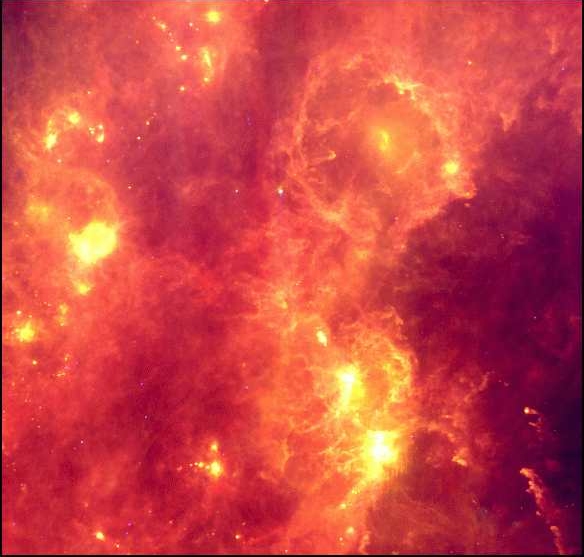IRAS View of the Constellation Orion


The familiar winter sky constellation Orion takes on a spectacular guise in the infrared, as seen in this false-color image constructed from data collected by the Infrared Astronomical Satellite (IRAS). This picture, covering about 30 x 24 degrees is a composite of IRAS data centered at 12 microns, 60 microns, and 100 microns. This infrared image highlights the vast areas of interstellar dust which are warmed by starlight and glow brightly in the infrared.
The bright yellow region in the lower right of the picture is the Sword of Orion, containing the Great Orion Nebula. Above it to the left is the nebulosity around the belt star Zeta Orionis which contains the often photographed Horsehead Nebula. Higher and to the left is M78, a reflection nebula. The Rosette Nebula is the brightest object near the left margin of the picture. Most of the visually bright stars of Orion are not prominent in the infrared. However, Betelgeuse can be easily seen in the upper center of the picture as a blue-white dot. The large ring to the right of Betelgeuse is the remnant of a supernova explosion, centered around the star Lambda Orionis. Another one, fainter and larger, can be seen in the lower left quadrant of the image.
INFRARED PROCESSING AND ANALYSIS CENTER